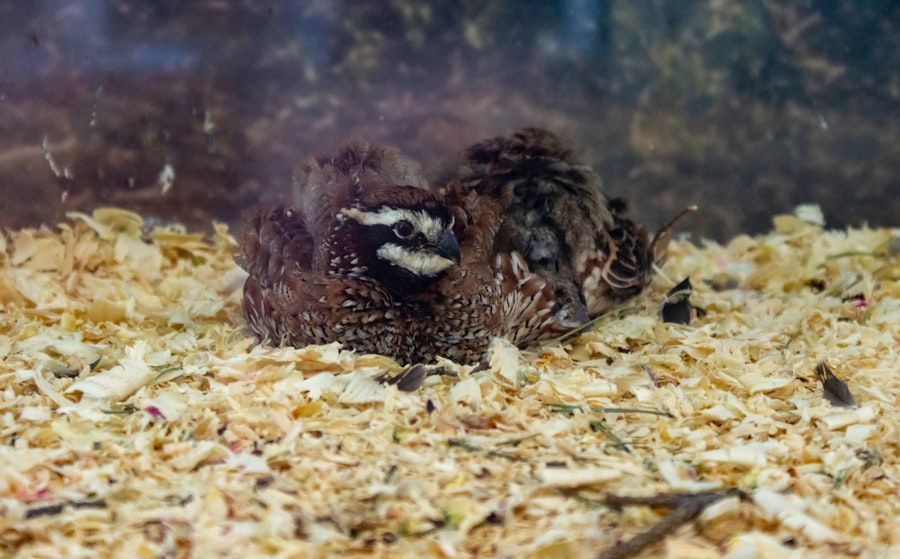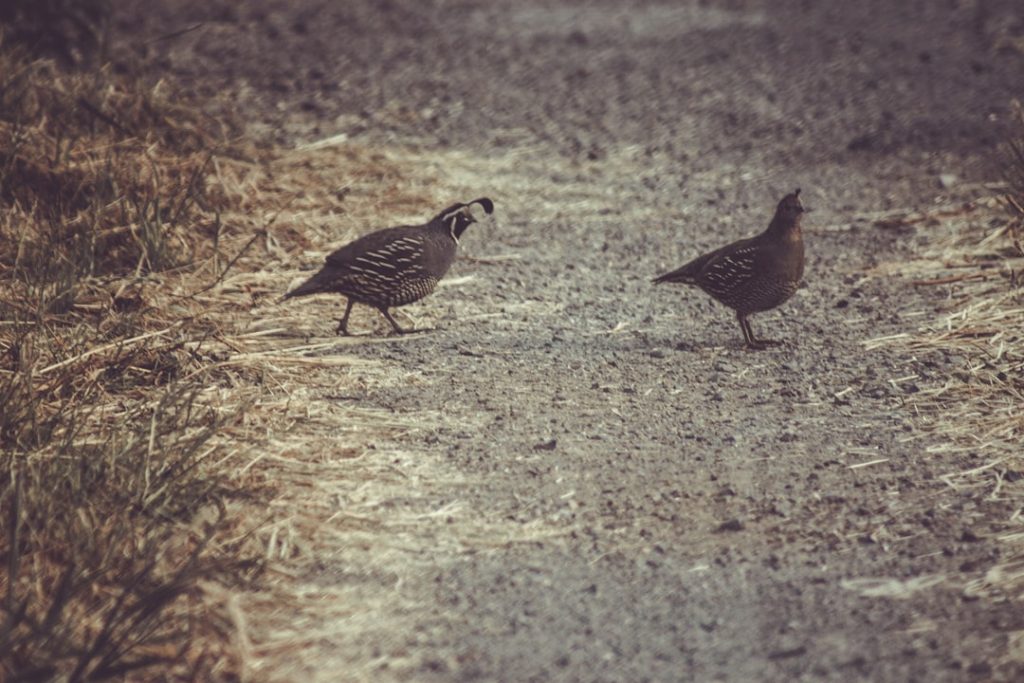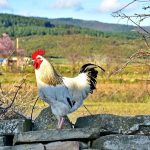Coturnix quail, also known as Japanese quail, are small game birds that are popular for their meat and eggs. There are several different breeds of Coturnix quail, each with its own unique characteristics and traits. Understanding the different breeds can help you choose the right quail for your needs and preferences.
Coturnix quail breeds can vary in size, color, and egg production. Some breeds are known for their larger size and meat production, while others are prized for their prolific egg-laying abilities. Additionally, different breeds may have specific temperaments and behaviors that make them more suitable for certain environments or purposes. By learning about the various Coturnix quail breeds, you can make an informed decision when selecting quail for your farm or homestead.
Table of Contents
- 1 Popular Coturnix Quail Breeds
- 2 Rare and Unique Coturnix Quail Breeds
- 3 Breeding and Raising Coturnix Quail
- 4 Choosing the Right Coturnix Quail Breed for You
- 5 Special Considerations for Different Coturnix Quail Breeds
- 6 Exploring the Diversity of Coturnix Quail Breeds
- 7 FAQs
- 7.1 What are the different types of coturnix quail breeds?
- 7.2 What are the characteristics of the Pharaoh coturnix quail breed?
- 7.3 What are the characteristics of the Italian coturnix quail breed?
- 7.4 What are the characteristics of the Tuxedo coturnix quail breed?
- 7.5 What are the characteristics of the Texas A&M coturnix quail breed?
- 7.6 What are the characteristics of the Jumbo coturnix quail breed?
Key Takeaways
- Coturnix quail breeds come in a variety of colors and patterns, each with its own unique characteristics and traits.
- Popular coturnix quail breeds include the Pharaoh, Texas A&M, and Italian varieties, known for their high egg production and fast growth.
- Rare and unique coturnix quail breeds such as the Tibetan, Golden, and Rosetta are prized for their distinct coloration and markings.
- Breeding and raising coturnix quail requires attention to diet, housing, and breeding practices to ensure healthy and productive birds.
- When choosing the right coturnix quail breed for you, consider factors such as egg production, meat quality, and temperament to match your specific needs and preferences.
- Special considerations for different coturnix quail breeds include temperature tolerance, broodiness, and specific care requirements based on their individual traits.
- In conclusion, the diversity of coturnix quail breeds offers a wide range of options for hobbyists and farmers alike, each with its own unique appeal and potential for success.
Popular Coturnix Quail Breeds
1. Jumbo Coturnix Quail: The Jumbo Coturnix quail breed is known for its larger size and rapid growth rate. These quail are popular for meat production and can reach a mature weight of 12-14 ounces. They are also known for their calm and docile temperament, making them easier to handle and manage. In addition to their meat production, Jumbo Coturnix quail are also good egg layers, making them a versatile choice for many quail enthusiasts.
2. Texas A&M Coturnix Quail: The Texas A&M Coturnix quail breed is prized for its high egg production and efficiency. These quail are known for their ability to lay large, speckled eggs at a rapid rate, making them a popular choice for those interested in quail farming for egg production. Texas A&M Coturnix quail are also relatively easy to care for and can thrive in a variety of environments, making them a practical choice for many quail enthusiasts.
Rare and Unique Coturnix Quail Breeds
1. Tibetan Coturnix Quail: The Tibetan Coturnix quail breed is a rare and unique variety that is prized for its striking appearance. These quail have a beautiful, mottled plumage that sets them apart from other breeds. In addition to their attractive appearance, Tibetan Coturnix quail are also known for their calm and gentle temperament, making them a popular choice for those looking for quail as pets or for ornamental purposes.
2. Italian Coturnix Quail: The Italian Coturnix quail breed is another rare variety that is known for its unique coloration. These quail have a distinctive, light-colored plumage with dark markings, giving them a striking and eye-catching appearance. Italian Coturnix quail are also valued for their egg production and can lay a good number of eggs in a year, making them a practical choice for those interested in both form and function when it comes to raising quail.
Breeding and Raising Coturnix Quail
Breeding and raising Coturnix quail can be a rewarding endeavor, but it requires careful attention to the specific needs of the different breeds. When breeding Coturnix quail, it’s important to select breeding stock that exemplifies the traits you are looking to perpetuate in your flock. This may involve choosing birds with desirable size, coloration, or egg-laying abilities, depending on your goals for your quail.
Raising Coturnix quail also requires providing appropriate housing, nutrition, and care to ensure the health and well-being of the birds. Different breeds of Coturnix quail may have specific requirements when it comes to housing and environmental conditions, so it’s important to research the needs of your chosen breed before getting started. Additionally, providing a balanced diet that meets the nutritional needs of your specific breed is essential for promoting good health and productivity in your quail flock.
Choosing the Right Coturnix Quail Breed for You
When choosing a Coturnix quail breed, it’s important to consider your specific goals and preferences for raising quail. If you are primarily interested in meat production, you may want to consider a breed like the Jumbo Coturnix quail, which is known for its larger size and rapid growth rate. On the other hand, if you are focused on egg production, a breed like the Texas A&M Coturnix quail may be a better fit due to its high egg-laying abilities.
If you are looking for a more ornamental or unique variety of quail, rare breeds like the Tibetan or Italian Coturnix quail may be appealing choices. These breeds are prized for their striking appearance and may be well-suited for those interested in raising quail for exhibition or ornamental purposes. By considering your specific goals and preferences, you can choose a Coturnix quail breed that aligns with your interests and objectives.
Special Considerations for Different Coturnix Quail Breeds

Each breed of Coturnix quail has its own unique characteristics and requirements, so it’s important to consider these factors when caring for your birds. For example, breeds like the Jumbo Coturnix quail may require larger housing accommodations and more robust feeding regimens due to their larger size and rapid growth rate. On the other hand, breeds like the Tibetan or Italian Coturnix quail may have specific environmental or behavioral needs that should be taken into account when caring for them.
Additionally, some breeds of Coturnix quail may have specific health considerations or susceptibilities that should be addressed when raising them. By understanding the special considerations associated with different breeds, you can provide the best possible care for your quail and help them thrive in your care.
Exploring the Diversity of Coturnix Quail Breeds
Coturnix quail breeds offer a diverse array of options for those interested in raising these small game birds. From popular breeds like the Jumbo and Texas A&M Coturnix quail to rare varieties like the Tibetan and Italian Coturnix quail, there are many choices available to suit different goals and preferences. Whether you are interested in meat production, egg-laying abilities, or ornamental qualities, there is likely a Coturnix quail breed that aligns with your interests.
By understanding the unique characteristics and requirements of different Coturnix quail breeds, you can make an informed decision when selecting birds for your flock. Whether you are an experienced quail enthusiast or just starting out with these fascinating birds, exploring the diversity of Coturnix quail breeds can open up new possibilities for your quail-raising endeavors.
If you’re interested in learning more about different types of coturnix quail breeds, you might also want to check out this informative article on how to convert a shed into a chicken coop on PoultryWizard.com. Understanding the different breeds of quail and how to care for them is essential for any quail enthusiast, and having a well-designed coop is crucial for their health and well-being. This article provides valuable insights into creating a suitable living space for your quail, ensuring they thrive in their environment. Learn more here.
FAQs
What are the different types of coturnix quail breeds?
There are several different types of coturnix quail breeds, including the Pharaoh, Italian, Tuxedo, Texas A&M, and Jumbo.
What are the characteristics of the Pharaoh coturnix quail breed?
The Pharaoh coturnix quail breed is known for its brown and white speckled feathers and is one of the most common and popular breeds of coturnix quail.
What are the characteristics of the Italian coturnix quail breed?
The Italian coturnix quail breed is known for its unique coloring, with a combination of brown, white, and black feathers.
What are the characteristics of the Tuxedo coturnix quail breed?
The Tuxedo coturnix quail breed is known for its striking black and white coloring, resembling a tuxedo, and is a popular choice for backyard breeders.
What are the characteristics of the Texas A&M coturnix quail breed?
The Texas A&M coturnix quail breed is known for its solid white feathers and is often chosen for its high egg production.
What are the characteristics of the Jumbo coturnix quail breed?
The Jumbo coturnix quail breed is larger in size compared to other breeds and is often chosen for meat production.
Meet Walter, the feathered-friend fanatic of Florida! Nestled in the sunshine state, Walter struts through life with his feathered companions, clucking his way to happiness. With a coop that’s fancier than a five-star hotel, he’s the Don Juan of the chicken world. When he’s not teaching his hens to do the cha-cha, you’ll find him in a heated debate with his prized rooster, Sir Clucks-a-Lot. Walter’s poultry passion is no yolk; he’s the sunny-side-up guy you never knew you needed in your flock of friends!







